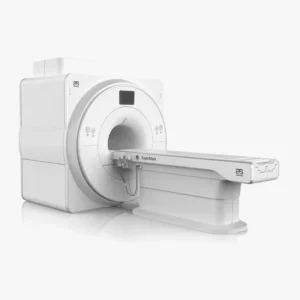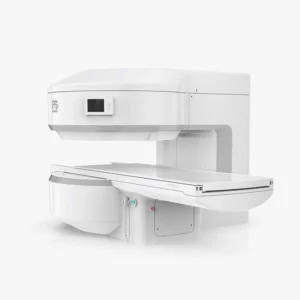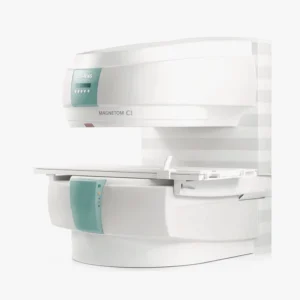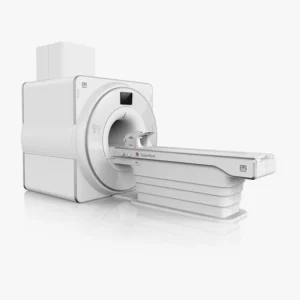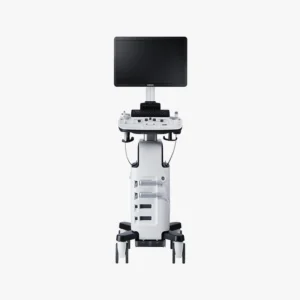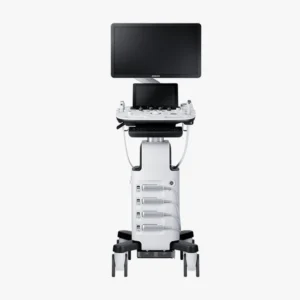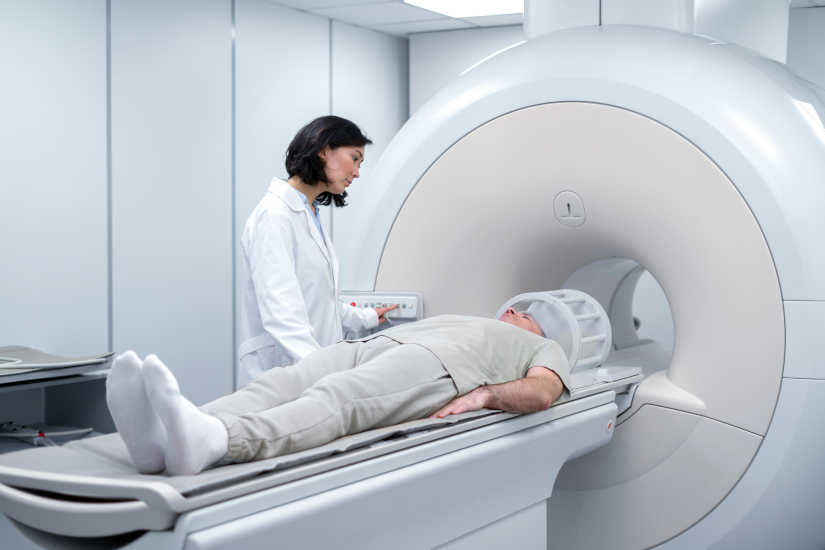
por Kiko Ramos | Oct 31, 2024 | Equipment analysis
The magnetic resonance imagingMRI, also known by its acronym MRI, is a technique of image diagnosis noninvasive MRI that produces three-dimensional anatomical images. MRI uses powerful magnets and radiofrequency waves which allow the creation of detailed images of the organs, tissues and internal structures of the body. Unlike other methods such as radiography or computed axial tomography (CT), magnetic resonance imaging (MRI) can be used to create detailed images of organs, tissues and structures inside the body. does not use ionizing radiation or X-raysIt is a safe, painless medical test that does not cause any harm to the patient.
This is one of the most widely used techniques for the production of medical diagnostics, analyze the different tissues and check for any disease, injury or abnormality.. MRI is used by health professionals to examine certain parts of the body and to study the differences existing between healthy and unhealthy tissuesas well as tissues that present abnormal conditions. MRI allows the creation of detailed three-dimensional images to examine organs such as the brain, spine, joints such as the knee, shoulder, hip, wrist and ankle; the abdomen, pelvic region, breasts, blood vessels and heart, among other regions.
To perform a MRI examinationis used, a magnetic resonance medical equipment. In this procedure, the patient is placed inside an MRI scanner. We can define it as a large circular apparatus which is open at both ends. Once the patient is inside the MRI equipment, a series of signals and radio waves are produced and detected by a receiver inside the device. Subsequently, the cross-sectional images of tissues that are visualized through a computer.
What is this process like and what does MRI detect? In the following article, we explain the origin of this medical technique and how it works, as well as its advantages and limitations.
Origin of magnetic resonance imaging
In 1946, Felix Bloch and Edward Purcell independently discovered the magnetic resonance phenomenonfor which they were awarded the Nobel Prize in Physics in 1952. But, actually, its development as a chemical and physical molecular analysis procedure took place in the period between 1950 and 1970. Beginning in 1971, Raymond Damadian demonstrated that MRI relaxation times differed between healthy and tumor tissues, which led scientists to begin to study this technique for the diagnosis of diseases.
At the same time, in 1973 Hounsfield introduced another of today's most widely used medical techniques: computed tomography (CT), which uses X-rays. The success of TAC The results showed that hospitals were willing to invest in the development of new diagnostic imaging equipment, which also drove the development of MRI. In the same year, Paul Lauterbur obtained the first magnetic resonance image, using a back projection technique similar to that of computed axial tomography.
As of 1980sthe gradual implementation of MRI in clinical practiceto the current situation. Today, magnetic resonance imaging is one of the most widely used diagnostic imaging techniques.
How does MRI work?
The human body is composed mainly of water and fat, so that hydrogen atoms account for 63% of the total number of atoms in the body. The hydrogen nucleuswhich consists of a proton, is used in magnetic resonance imaging because it acts like a powerful magnet that generates a magnetic field around the patient's body. MRI is a diagnostic imaging method based on the absorption and emission of energy in the form of a set of radiofrequency signals within the electromagnetic radiation spectrum. The radiofrequency used in MRI produces frequencies of between 15 and 80 megahertz, making it a non-ionizing radiation that is harmless to the body.
In an MRI exam, the patient is placed inside an MRI scanner. magnetic resonance scanner which produces radio waves that interact with the protons, generating a series of radio frequency signals that are detected by a receiver inside the device. All these signals emitted and detected by the scanner's antenna are processed in a computer, where they are detailed images of the fabrics and inside the organism that allow the medical diagnosis to be made.
Specifically, a MRI equipment consists of the following elements:
- External magnet
- Magnetic field gradients
- Radio frequency transmitter
- Radio frequency receiving antennas
- Computer
How is an MRI exam performed?
To perform an MRI exam, a medical MRI machine is used, where the patient is introduced into a large device that has a circular shape and is open at the ends. This procedure is performed in a special room housing the MRI system or scanner. A member of the MRI staff accompanies the patient into the room, where he/she will be asked to lie down on a padded table and then be introduced into the machine to begin the MRI diagnosis.
Before the test
The majority of diagnoses have a duration between 15 and 45 minutesdepending on the part of the body to be tested and the number of images needed. Before the test, the person must partially or completely undress and is provided with a gown that has no buttons or metal fasteners. It is important to leave all metal objects and other items that could be affected by the magnetic field outside the MRI room. For example, keys, jewelry, cell phones, credit cards or watches.
During the test
It is important that the patient remains still and relaxed.. In some examinations, an intravenous injection of a contrast material called gadolinium to obtain a clearer image of the area to be examined. To do this, at the beginning of the medical test, a nurse will place an intravenous line into a vein in the patient's arm or hand using a small needle.
On the other hand, it should be noted that the magnetic resonance system can produce certain loud noises during the procedure. To prevent any problems associated with noise, earplugs are provided. For the duration of the diagnosis, the patient will be monitored at all times and will be able to communicate with a medical professional via an intercom.
After the test
Once you have completed the exam, images will be reviewed by a radiologistwho will subsequently inform the physician of the results of the MRI examination.
MRI in medical practice
Magnetic resonance imaging is a procedure used to study the differences that exist between healthy and unhealthy tissues, as well as other regions of the human body that present abnormal conditions. Nowadays, it is one of the most widely used diagnostic imaging techniques and it allows for detect a large number of diseases and abnormalities in virtually all regions of the body:
- HeadCentral nervous system, orbit, face and skull.
- Neck.
- SpineSpinal cord, meninges, bone spine and intervertebral discs.
- Chestespecially at the cardiovascular level.
- Abdomenliver, biliary tract, spleen, pancreas, urinary tract, genital tract and pelvis.
- Large joints and extremities.
What does MRI detect?
MRI is often prioritized over CT scanning when the physician needs to have more detail about the soft tissues. For example, it helps to obtain images of abnormalities in the brain, spinal cord, muscles and liver. It is also very useful in identifying tumors in these tissues. MRI has the following clinical applications:
- Morphological applicationsDefinition of congenital anomalies, traumatic pathology, detection and extension of tumors,
degenerative diseases, vascular pathology, inflammatory processes and infectious pathology.
- Functional applicationsThese are functional brain MRI studies and functional cardiac studies.
- Tissue analysis applicationsMRI spectroscopy, chemical shift studies, perfusion studies and diffusion studies.
This diagnostic technique is also used to analyze other types of conditions and as an alternative to other procedures that present greater risks:
- Measuring the presence of certain molecules in the brain that distinguish a tumor from an abscess.
- Identify alterations in the female genitalia and fractures in the hip and pelvis.
- Perform the valuation of certain common joint anomaliessuch as torn knee ligaments or cartilage and sprains.
- Study and evaluate bleeding and other infections.
- MRI is applied when the The risks of performing a CT scan are high.. Especially, it can be used in people who have had a reaction to iodinated contrast media in a CT scan and for pregnant women, because radiation can cause problems in the fetus.
Types of magnetic resonance imaging
We can distinguish between different types of MRI:
Functional Magnetic Resonance Imaging or fMRI
fMRI is used for observe the structures and functioning of the brain. It measures the small changes in blood flow that occur in brain activity. This type of test helps detect abnormalities within the brain that cannot be found with other imaging techniques.
Perfusion magnetic resonance imaging
Professionals can use this type of magnetic resonance imaging for to estimate the blood flow in a particular area. It is useful in determining whether the blood supply to the brain has been reduced when a stroke. It also serves to identify areas where blood flow is increased, such as in the case of the tumors.
Diffusion-weighted magnetic resonance imaging
It is used to detect changes in the water movements of cells that are not functioning normally. It helps to identifying early stages of strokes, detect brain disordersanalyze whether a tumor has spread o differentiate a brain abscess from a tumor.
Magnetic resonance spectroscopy
This type of test is used for detect brain disordersThe method can distinguish between dead tissue within an abscess and the presence of multiplying cells within a tumor. Specifically, this method can distinguish between dead tissue within an abscess and the presence of multiplying cells within a tumor. In turn, it is used to to assess metabolic disorders of the muscles and nervous system.
Magnetic resonance angiography
Provides detailed images of blood vesselsIt is used to assess the blood vessels of the brain, heart, abdominal organs, arms and legs. In particular, this technique is used to analyze aortic aneurysms, aortic dissection, narrowing of the arteries of the extremities, thrombi in the veins of the extremities, blood flow to tumors and tumors affecting the blood vessels.
Magnetic resonance venography
This is a magnetic resonance imaging of veins. Detects the cerebral venous thrombosisThe presence of thrombi in a vein that carries blood from the brain.
Meet our 4D Medical equipment
Advantages of magnetic resonance imaging
MRI has established itself as a safe, accurate and effective diagnostic imaging method. At present, MRI stands out for offering many advantages, which has led to prioritizing this technique over other procedures, especially computed axial tomography or TACradiological tests, radiological tests and ultrasoundsWhat are the advantages?
- It is a non-invasive, safe and painless scanning technique. It does not use ionizing radiation or nephrotoxic contrast media and does not produce adverse effects in patients.
- MRI is a test that helps to assess both the structure of an organ and its functioning.
- Provides a high spatial, temporal and tissue resolution for tissue differentiationTherefore, MRI has an important role in the early diagnosis of soft tissue diseases.
- It has three-dimensional capabilityThe system provides detailed, cross-sectional images of the tissues and organs to be examined. In this way, it makes it possible to detect anomalies that could be hidden by the bones when other diagnostic methods are used.
- Allows you to to perform functional studies. Functional Magnetic Resonance Imaging or fMRI is a medical test used to examine the parts of the brain that are handling critical functions, evaluate the effects of stroke or other diseases, as well as guide brain treatment.
Limitations and risks of magnetic resonance imaging
However, it also presents some risks and disadvantages that are important to analyze:
Increased diagnostic time and cost
The time required to perform an MRI scan is high. For this reason, CT is often used in emergency situations, such as severe injuries and strokes. In turn, the economic cost is higher and there is a limitation in availability compared to other imaging techniques.
Anxiety and claustrophobia problems
The magnetic resonance equipment is a small, enclosed spaceThe patient may feel a feeling of claustrophobia or anxiety. For this purpose, the patient may be given an anxiolytic, such as alprazolam or lorazepam, prior to the start of the examination.
Currently, there are also open magnetic resonance scannerswhich offer an open side and a wider interior. This makes people can reduce claustrophobia and obese people can access more easily. However, the images produced may be of lower quality. But despite this, such open devices can be used for diagnostics.
Magnetic field effects
The presence of implanted metallic devices or materials in the patient's body can produce certain adverse effects. The magnetic field used in this medical technique is very powerful and always active, which can cause the devices to shift, overheat or malfunction. In addition, they can also distort the images generated.
Among these devices are the cardiac pacemakers, defibrillators, cochlear implants and metallic magnetic clicks used in the treatment of aneurysms. However, other devices such as dental implants, hip replacements or spinal straightening rods have none of these effects. Therefore, it is important that people who have any implanted devices inform the physician before making an IMR diagnosis.
Reactions to contrast agent
The gadolinium contrast media can lead to a number of reactionsThe most common symptoms are headache, nausea, pain and cold sensation in the area where the injection is made, distortion of taste and dizziness. However, it should be pointed out that these contrast agents present lesser reactions than iodinated contrast media used in CT scans and CT angiography.
Conclusion
Magnetic resonance imaging (MRI) is a diagnostic imaging technique that provides detailed, cross-sectional imaging examinations that are essential in the detection of disease and for studying virtually all regions of the human body.
If you are interested in information about magnetic resonance equipment or any other medical equipment, you can contact us and we will help you to choose the best solution according to the needs of your clinic or hospital.
Contact 4D
Kiko Ramos
CEO of 4D Médica. Expert in marketing and distribution of medical equipment.

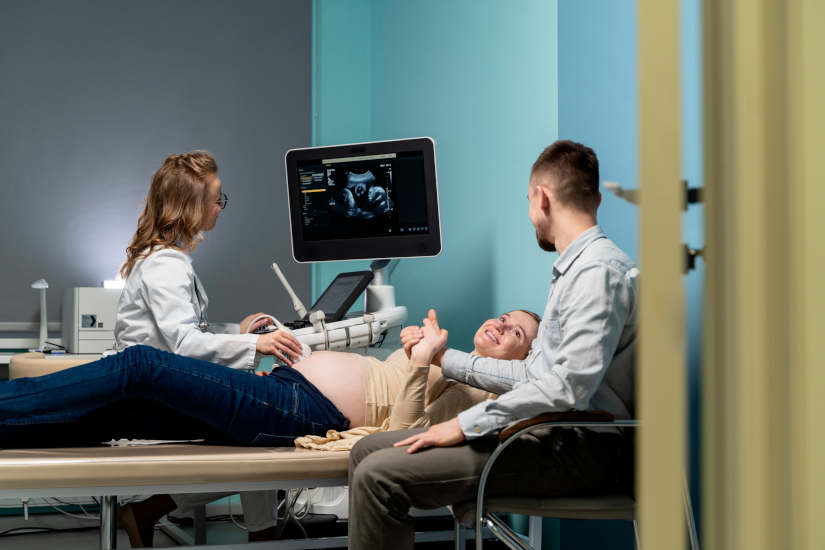
por Kiko Ramos | Oct 23, 2024 | Equipment analysis
An ultrasound, also called a sonogram or ultrasound, is an ultrasound scan. diagnostic imaging test that uses the sound waves to create images of organs, tissues and internal structures of the organism. It is a simple, safe and non-invasive technique which allows health professionals to analyze and observe the inside of the body without surgery. In other words, it is a diagnostic technique that no need to make any incisions or use ionizing radiationas in the case of the X-rays.
It stands out for being a comfortable, economical and painless test. It is mainly used for diagnose various medical conditionshealth monitoring and development of the baby during pregnancy and guide certain medical proceduressuch as biopsies, tissue extraction, and other techniques that require the use of image diagnosis.
How does an ultrasound scan work?
An ultrasound is a technique that emits a series of mechanical waves that have a frequency above the hearing ability of the human ear and allow create two-dimensional and three-dimensional images. These images are called sonograms and are performed with specific equipment. The medical devices that allow these diagnoses to be performed are ultrasound scanners. They have a tool rod-shaped which is known as transducer and is responsible for detecting the waves produced in the different tissues, organs and fluids of the body. These are then picked up again by the transducer and converted into electrical signals.
In order to analyze the waves, a special gel on the skin in the area to be examined. Through the use of a computer, these signals are processed to create a real-time image of internal structures of the organism. The images produced are visualized on the screen and provide information on movements that are occurring, the distance at which a fabric is locatedas well as its size, shape and composition.
Types of ultrasound scans: Uses and main differences
We can find different types of ultrasound: ultrasound in pregnancy, diagnostic medical ultrasound, guided ultrasound, as well as 3D and 4D ultrasound. Let's see their main differences:
Ultrasound in pregnancy
Ultrasound in pregnancy, also known as obstetrical ultrasound, is a diagnostic imaging test that provides the visualization of the fetus inside the mother's uterus. As it is an ultrasound technique that does not involve radiation, it is a safe technique for mother and baby.
What is fetal ultrasound used for?
It allows analysis of the baby's growth, health and general development. In particular, it provides the following information:
- Confirmation of pregnancy.
- Verification of multiple pregnancy (twins and triplets).
- Knowledge of the gestational age. That is, how far along the pregnancy is.
- Analysis of the sizethe position of the fetus, the growth and the sex of the baby.
- Diagnosis of congenital defects in the various parts of the baby's body, such as the brain, heart or spinal cord.
- Study of the existing amount of amniotic fluid. It is essential for the development of the baby's lungs and bones, as well as to protect the baby from injury.
- Identify problems in the placenta, uterus, cervix and ovaries of the mother.
- Information on possible signs that could indicate an increase in the number of risk of Down syndrome.
Diagnostic medical ultrasound
Diagnostic medical ultrasound is essential for the diagnosis and treatment of study of diseases or possible health problems in the patient. This type of test is used when a person detects certain symptoms that are important to analyze. Using this type of ultrasound, medical professionals can study various medical conditions involving different parts of the body. Depending on the area to be analyzedwe can distinguish different modalities of diagnostic medical ultrasound scans:
- Abdominal ultrasoundIt focuses on the observation of the internal structure of the abdomen. It allows to analyze organs such as the pancreas, kidneys, liver, gallbladder and spleen.
- Vaginal ultrasoundVaginal ultrasound: This test is used to analyze the uterus, ovaries, endometrium, cervix, fallopian tubes and pelvic area of the woman. Vaginal or tansvaginal ultrasound is used to detect possible gynecological conditions, such as the presence of ovarian cysts, fibroids and uterine fibroids, abnormalities in the menstrual cycle, certain types of infertility and pelvic pain.
- Rectal ultrasoundRectal examination: Consists in the evaluation of the rectum to study the prostate and bladder function.
- Renal ultrasoundKidney ultrasound: Evaluates the condition of the kidneys, both the size, location and shape, as well as their adjacent structures. This type of ultrasound helps detect the presence of tumors, cysts and renal obstructions.
- Breast ultrasoundIt is used to detect abnormalities in the breast tissue, such as the presence of cysts. It is often used as a backup technique after mammography.
- Cervical and thyroid ultrasoundAnalyzes the functioning of the thyroid gland, which is located in the neck. It is essential to study possible health problems that may arise, such as the appearance of nodules, cysts and structural alterations. It is also used to analyze the salivary glands.
- Doppler or vascular ultrasoundThe speed and direction of blood flow in the heart and blood vessels can be analyzed with this ultrasound. It allows to measure the blood circulation in the different organs of the body, as well as the neck, arms and legs. It is an essential test to diagnose possible blockages, narrowing and problems in the circulatory system.
- Muscle ultrasoundMusculoskeletal ultrasound: This ultrasound is also called musculoskeletal ultrasound. It explores the different muscles, tendons, ligaments, bursae, cartilage, joints and bone surfaces, making it possible to detect the presence of injuries, tendinitis, degenerative problems and other conditions of the muscular tissues.
Guided ultrasound
Guided ultrasound is a technique used for the diagnosis and treatment of development of ultrasound-guided procedures. It is used to guide health care professionals in the Performing tissue biopsies, tissue aspiration and removal, catheter placement, abscess drainage and percutaneous injections.. This technique consists of the introduction of a needle or catheter into the area of the body to be tested. Transducer advancement is controlled in real time, allowing the needle to be steered for more accurate medical diagnosis.
This type of ultrasound can be performed in two ways: through devices adapted to the probes or through the hands-free techniquewhere the professional holds the needle with one hand and the probe with the other hand.
3D and 4D ultrasound
The technological advances in the field of medicine allow the images generated in an ultrasound scan to be displayed in 3D and 4D. The 3D ultrasound scans emerged at the end of the 1990s and offer a wide range of high-resolution static images with a three-dimensional perspective. Currently, the systems used are based on mechanical transducerswhich make it possible to obtain images in the three perpendicular planes. Thus, in the image, the following can be seen transverse, longitudinal and coronal sections. As for the 4D ultrasound scansincorporate a technology that captures motion in real timeThis provides a closer and more realistic reproduction of what is happening inside the organism.
In which cases are 3D and 4D ultrasound scans used?
The 3D ultrasound scans are used in pregnancy and in various specialties. such as gastroenterology, gynecology and obstetrics, breast and uterine pathology and cardiology. It also plays an essential role in vascular surgery, urology, rheumatology and traumatology.
For their part, the 4D ultrasound scans are used during pregnancy to analyze the baby's development. By providing real-time motion, shows the gestures and movements made by the baby inside the uterus and also serves to detect possible problems and anomalies. It is recommended to be performed around the 28th week of gestation.This is the moment when the fetus is more developed and its features are more similar to those of a newborn. At the same time, in 4D ultrasounds, it is essential that there is a sufficient amount of amniotic fluid. This is a fundamental aspect for the ultrasound waves to be transmitted properly. Otherwise, the image will be displayed with lower quality, so it would not be advisable to use this technique.
However, it should be noted that 3D and 4D ultrasound scans are not a substitute for follow-up ultrasound scans. which must be performed at 12, 20 and 32 weeks of gestation. Therefore, it is a complementary test for more information on fetal growth.
Innovations in the field of ultrasound
In the field of diagnostic imaging, the ultrasound scanners are the devices used to perform ultrasound scans. In recent years, numerous advances have led to the development of a new type of ultrasound system. medical equipment adapted to new needs of medical centers, hospitals and health professionals.
In addition to the traditional ultrasound scanners that allow a simple and safe test to be performed, the following have emerged new generation ultrasound scanners that use the latest technology and are equipped with artificial intelligence. This type of ultrasound scanners are portable and are characterized by the fact that they can be used completely remotely. In this way, professionals do not have to be present in medical centers and can reach many more regions and patients. Undoubtedly, a a key aspect to boost telemedicine and create fast, complete and accurate diagnostics.
Meet our 4D Medical Ultrasound Scanners
Conclusion
Ultrasound scans are one of the The most widely used medical diagnostic imaging techniques in use today. This is because it is an easy, safe and non-invasive test that is very useful for diagnosing certain medical conditions, for analyzing the development of the baby during pregnancy and also as a support technique for other procedures. In most cases, ultrasound is part of the first diagnosis to then evaluate how to proceed and what other tests should be performed when treating an ailment or disease.
If you are looking for an ultrasound equipment, from 4D Médica, we advise you to find the best option for your clinic or hospital. Contact us and we will solve all your doubts.
Contact 4D
Kiko Ramos
CEO of 4D Médica. Expert in marketing and distribution of medical equipment.


por Kiko Ramos | Oct 10, 2024 | AI in medicine
The veterinary radiology has undergone significant progress in the last decade, radically transforming the way animal diseases are diagnosed and treated. With the introduction of advanced technologies and high-definition equipment, veterinarians are now able to obtain clear and detailed images that are crucial for a accurate diagnosis. This not only improves the quality of treatment, but also minimizes stress and discomfort for the animals during diagnostic procedures.
One of the most noteworthy innovations is the digitization of X-ray equipmentwhich allows instant viewing of images and facilitates faster and more accurate analysis. This technology not only speeds up the diagnostic process, but also reduces radiation exposure for both animals and operators, ensuring a safer and more efficient environment in veterinary clinics.
Main advances in veterinary diagnostic imaging
What advances have arisen in diagnostic imaging in the veterinary sector? We can highlight the following:
Use of CT and MRI in small animals
The use of CT in small animals has become an invaluable tool in veterinary radiology. This technique provides three-dimensional images of the inside of the animal's bodywhich is essential for accurate diagnosis of complex conditions. CT in small animals is especially useful for examining fine details of bones, internal organs and other structures that are difficult to visualize by conventional X-rays.
On the other hand, the veterinary magnetic resonance imaging offers significant advantages over other forms of diagnostic imagingespecially with regard to the soft tissue visualization. This method is extremely sensitive for detecting diseases of the brain, spinal cord and other internal organs in small animals. MRI does not use ionizing radiation, which makes it safe for repeated use for detailed follow-up and longitudinal diagnostics.
Advances in veterinary ultrasonography
Ultrasonography has revolutionized veterinary radiology applications, offering a new way of non-invasive diagnostic tool that is capable of to produce real-time images of internal organs. This technology is particularly useful for examining the abdomen and heart, as well as for reproductive management in a wide variety of animal species. With advances in transducers and improvements in image quality, ultrasonography allows veterinarians to perform precise diagnoses and procedures such as guided biopsies with high accuracy.
Innovations in veterinary cardiac ultrasound
Cardiac ultrasound has become an indispensable tool in veterinary medicine for the diagnosis and treatment of evaluation of the heart of the animals. This advanced technique enables veterinarians to observe the heart function in real time, offering a crucial window into the early detection of heart disease. Improvements in ultrasound machines and the development of more sensitive probes have significantly increased the accuracy of diagnoses, allowing earlier interventions and increasing the success rates of treating cardiac conditions in animals.
All these innovations, new trends and applications allow further progress in the veterinary sector to improve the diagnostics and treatments needed for all types of animals.
Kiko Ramos
CEO of 4D Médica. Expert in marketing and distribution of medical equipment.


por Kiko Ramos | Oct 10, 2024 | AI in medicine
The medical technology is advancing at an unprecedented pace, driven by ongoing innovation in areas such as robotics, telemetry and digital diagnostic systems.. These advances are designed not only to improve the quality of medical care, but also to make it more accessible.
Advances in medical technology
Innovations in X-ray equipment, for example, now make it possible to perform procedures faster and with less radiation exposure, benefiting both patients and healthcare professionals. What kind of advances are there in medical technology? The following is an overview of the latest news and developments in the healthcare sector:
New developments in X-ray equipment
The integration of artificial intelligence is enabling X-ray systems to provide preliminary diagnostic recommendations, which can accelerate the medical evaluation process and improve the accuracy of the early detection of diseases.
Innovations in ultrasound and endoscopy equipment
In the field of ultrasonography and endoscopy, improvements in technology have led to the creation of more compact and portable devicesThe new system allows diagnostics to be performed in less conventional settings such as rural clinics or remote offices. The ultrasound systems are capable of providing high-resolution images that are essential for the diagnosis of musculoskeletal and cardiac conditions. At the same time, innovations in endoscopy are improving the ability of visualize and treat gastrointestinal conditions with less discomfort for the patient.
Telemedicine
Telemedicine is another area that has shown great growth. It allows physicians to have remote consultations with patients and can monitor their health. Through the use of portable devicesspecialists will be able to perform diagnostics patients without having to be in person at a medical center. This is a major breakthrough, since facilitates access to medicine to more people, especially those living in less populated and remote regions.
Advances in high-field magnetic resonance imaging in veterinary medicine
High-field magnetic resonance imaging is revolutionizing veterinary diagnostics, particularly in small and exotic animals. This technology makes it possible to obtain detailed soft tissue imagingThis is crucial for neurological and soft-tissue diagnostics. With stronger magnetic fields, veterinarians are able to detect anomalies more accurately and quicklyThis will facilitate more accurate diagnoses and more effective treatments.
Use of fluoroscopy in interventional veterinary procedures
Fluoroscopy is an imaging technique that makes it possible to view internal structures in motion in real time, being especially useful in veterinary interventional procedures. This technology is used to guide procedures such as stent placement, biopsies and minimally invasive surgeries. By providing continuous visualization, fluoroscopy helps to increase the precision of procedures and reduces the risks associated with surgical procedures.
As we can see, there are more and more advances in the field of medical technology that help to make diagnoses and interventions faster, more effective and less risky for patients.
Kiko Ramos
CEO of 4D Médica. Expert in marketing and distribution of medical equipment.

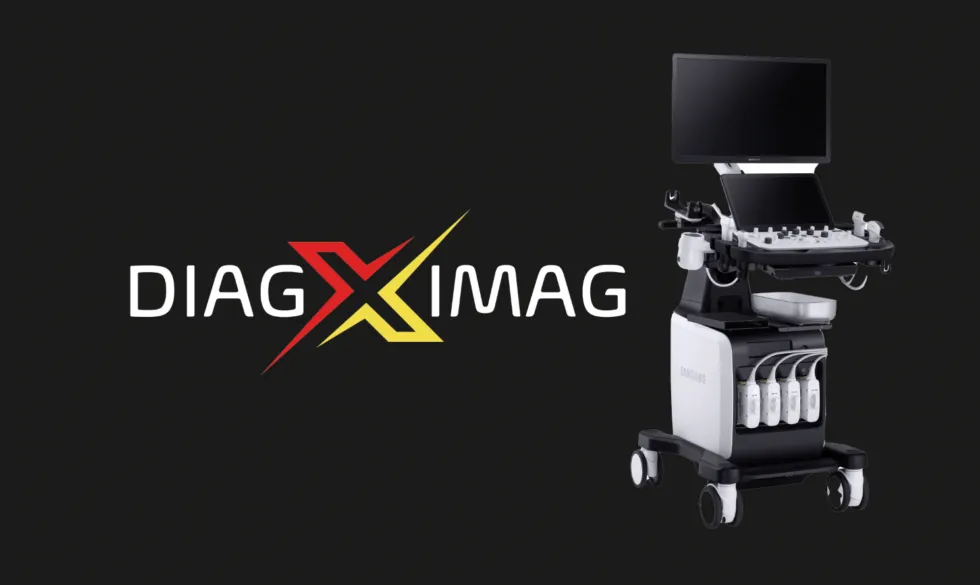
por 4D Medical | Oct 10, 2024 | News
In the first half of 2024, the Health Service of the Principality of Asturias (SESPA) awarded to Diagximag a contract valued at 1.4 million euros for the supply of 54 state-of-the-art ultrasound scanners for the Asturian public health system.. Diagximag, of Asturian origin, is the subsidiary company of the 4D Medica company that belongs to the Substrate AI group. Last Monday, September 30, the final handover of the ultrasound scanners was signed, marking a milestone for the modernization and digitalization of the health system in the region of Asturias.
New ultrasound scanners with advanced technology and artificial intelligence
The new equipment was delivered between July and August 2024 and is characterized by a advanced technology and be equipped with artificial intelligence. The Samsung AI-enabled ultrasound scanners have pioneering technology through their Sonosync functionwhich allows radiologists to using the ultrasound scanner remotely. In this way, professionals can use the equipment from their own home, as if they were physically present at the medical center itself. This represents a breakthrough in telemedicine, as it facilitates fast and accurate diagnoses regardless of the specialist's location.
With this project, Substrate AI reaffirms its commitment to digital transformation and artificial intelligence applied to healthcare. A new step that leads them to consolidate their position as a benchmark in cutting-edge technological solutions.
About Substrate AI
Substrate AIa company listed on BME Growth, is leader in the development of artificial intelligence technologies applied to different industrieswith a special focus on health. Through its subsidiaries Diagximag and 4D Medica, Substrate AI is committed to innovation and the improvement of essential services through the implementation of AI-based solutions.


